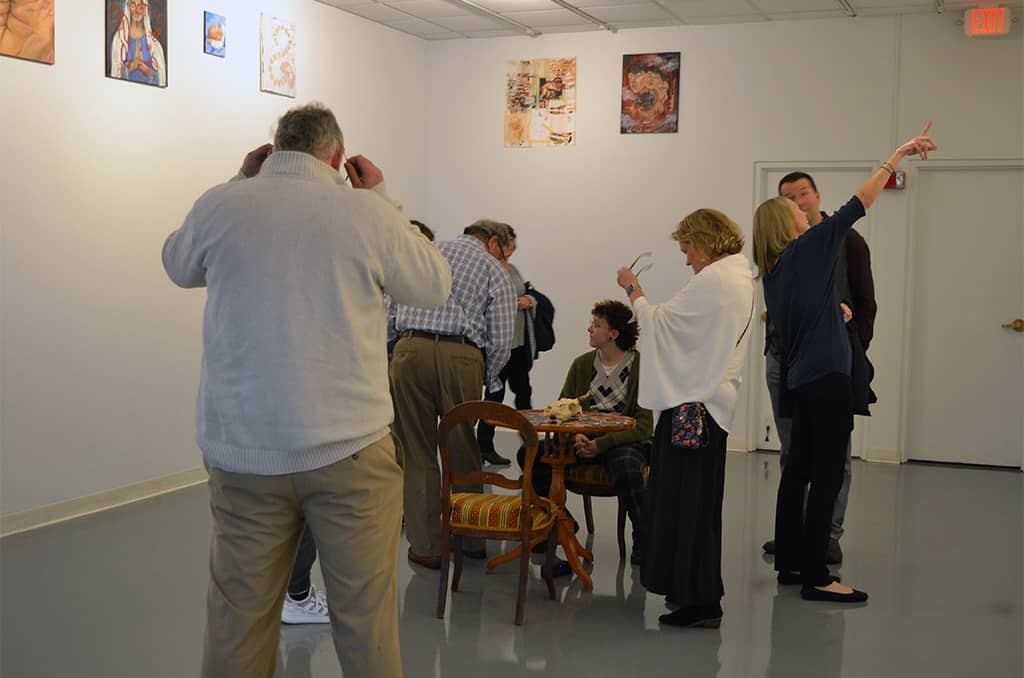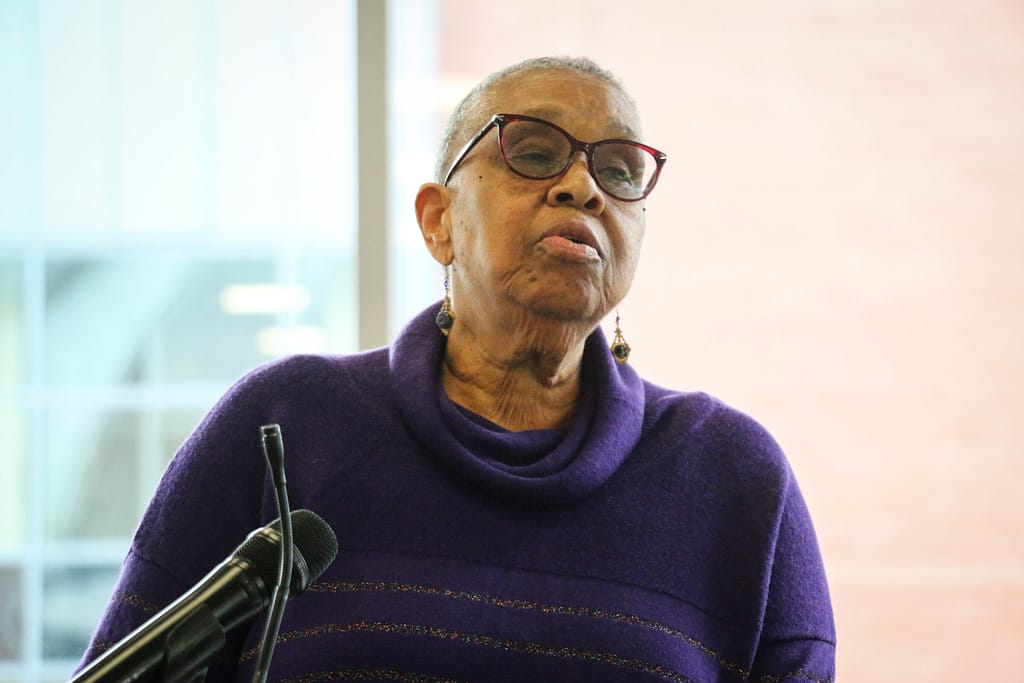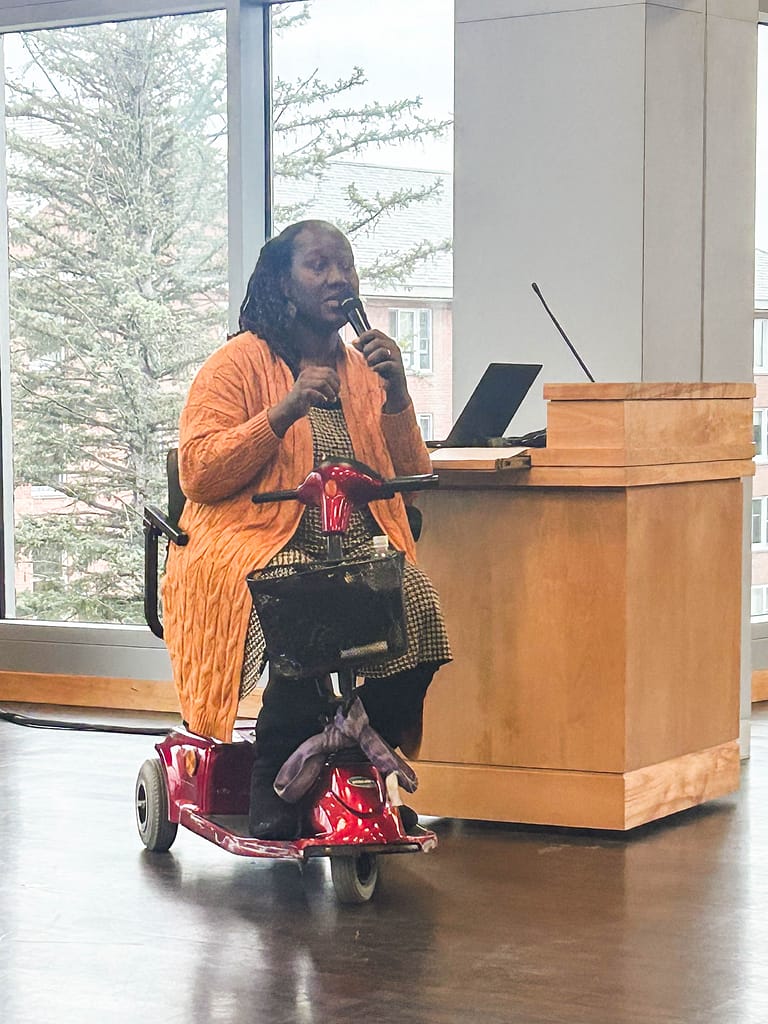Field and factory labor as acts of liberation:
Saint Michael’s College fellow uses grandmother’s ledger to explore the role of Black workers in Jim Crow Louisiana
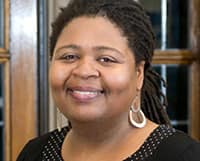
Jolivette Anderson-Douoning
A ledger documenting the everyday activities of a Black woman living in a segregated neighborhood of Shreveport, Louisiana, after World War II is driving the research of the woman’s granddaughter – a fellow at Saint Michael’s College – by providing historical insight into the labor opportunities and practices available to Black workers at the time.
Jolivette Anderson-Douoning, the Edmundite African American Fellow in the Saint Michael’s History Department and a PhD Candidate in the Purdue University American Studies Program, has used the ledger kept by her grandmother to inform part of her dissertation research. The North Louisiana native and former Jackson, Mississippi, performance artist will present a public lecture titled “The Hands that Picked the Cotton: A Black Woman’s Labor as Acts of Liberation in Segregated Shreveport” about her dissertation chapter, “The Work (Labor) House,” during a free event on campus and via Zoom on October 25, from 6:30 to 7:45 p.m. in the McCarthy Arts Center.
According to Anderson-Douoning, the lived experiences of her grandmother, Mrs. Goldleana, are inextricably linked to the cotton and timber industries in Caddo Parish and believed to be interconnected with labor organizing work done by everyday people in Shreveport. She sees Mrs. Goldleana’s different jobs – picking cotton, working in the chair factory, serving as a seamstress, and canning foods – as acts of freedom, not enslavement, because she did those things by choice. She also put to use the skills that she brought with her when she migrated to Shreveport from rural Louisiana.
“Mrs. Goldleana’s labor allowed her to create certain conditions and opportunities that brought my life into existence, literally, because she is my maternal grandmother,” Anderson-Douoning said.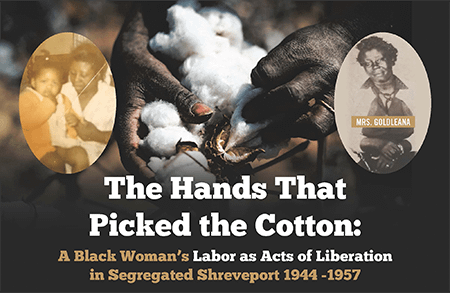
She added, “I am aware that the subject and imagery of field work related to cotton production and African Americans doing that labor has been used to demean and stereotype us and is often connected to slavery in the southern United States. My lecture is not meant to trigger Black people – it is to look at the history and the everyday people who worked to create the present conditions that exist within family units as well as in labor practices in the nation, especially the Black women who left historical record of their work.”
The lecture focuses on a period after World War II leading into the Civil Rights activity of the 1960s in Shreveport, Louisiana, which was connected to other Civil Rights organizing being done in other areas of the Deep South. At the time, Louisiana state laws required Black residents to live in “All Black” or “Colored Only” neighborhoods. (Mrs. Goldleana lived in the Hollywood neighborhood.)
Anderson-Douoning uses the “work house” as a conceptual space to shelter the history of Mrs. Goldleana’s real life work experiences and try to better understand her life and work during Jim Crow segregation in Louisiana between 1944 and 1957. The “work house” is where Mrs. Goldleana’s labor is deciphered, understood and presented as the way that she and other Black residents chose to liberate themselves from the “second-class citizenship” status assigned to Black people during Jim Crow.


